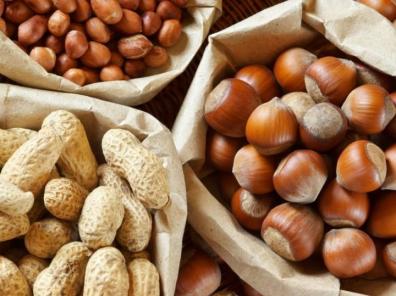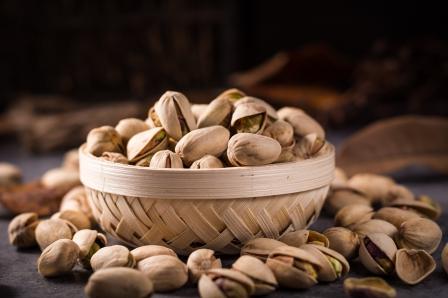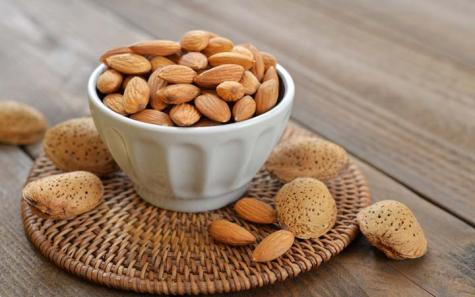Peanuts are a popular snack enjoyed by many around the world. Whether you like them roasted, salted, or as peanut butter, there’s no denying that peanuts are a versatile and tasty treat. However, there has been some debate about whether raw peanuts are a healthy option. In this article, we will take a closer look at raw peanuts and explore their nutritional benefits, potential risks, and how they can fit into a balanced diet. What are Raw Peanuts? Raw peanuts, also known as green peanuts, are uncooked peanuts that have not been roasted, salted, or processed in any way. They are commonly used in cooking and can be found in dishes like peanut soups, stews, and sauces. Raw peanuts have a mild flavor and a crunchy texture, making them a versatile ingredient in both savory and sweet dishes. Nutritional Benefits of Raw Peanuts: Raw peanuts are a nutrient-dense food that provides a range of essential vitamins, minerals, and antioxidants. Here are some key nutritional benefits of raw peanuts: 1. Protein: Raw peanuts are an excellent source of plant-based protein, with around 7 grams of protein per 1-ounce serving. Protein is essential for building and repairing tissues in the body and is especially important for muscle growth and maintenance. 2. Healthy Fats: Raw peanuts are high in monounsaturated and polyunsaturated fats, which are considered heart-healthy fats. These fats can help lower LDL (bad) cholesterol levels and reduce the risk of heart disease when consumed in moderation. 3. Fiber: Raw peanuts are a good source of dietary fiber, with around 2 grams of fiber per 1-ounce serving. Fiber is important for digestive health, as it helps regulate bowel movements, prevent constipation, and promote a feeling of fullness. 4. Vitamins and Minerals: Raw peanuts are rich in various vitamins and minerals, including vitamin E, folate, niacin, magnesium, and phosphorus. These nutrients play important roles in supporting overall health and well-being. Potential Risks of Raw Peanuts: While raw peanuts offer numerous health benefits, there are some potential risks associated with consuming them in their raw form. Here are some factors to consider: 1. Aflatoxin Contamination: One of the main risks associated with raw peanuts is aflatoxin contamination. Aflatoxins are toxic compounds produced by certain molds that can grow on peanuts stored in warm, humid conditions. Ingesting aflatoxin-contaminated peanuts can increase the risk of liver damage and other adverse health effects.
.
2. Allergies: Peanuts are one of the top food allergens, and some individuals may experience allergic reactions to peanuts, whether they are consumed raw or cooked. Allergic reactions to peanuts can range from mild symptoms like hives and itching to severe reactions like anaphylaxis, which can be life-threatening. 3. Digestive Issues: Some people may experience digestive issues, such as bloating, gas, and indigestion, when consuming raw peanuts. This is because raw peanuts contain enzyme inhibitors and phytic acid, which can interfere with the digestion and absorption of nutrients. How to Safely Enjoy Raw Peanuts: If you enjoy the taste and crunch of raw peanuts and want to incorporate them into your diet, here are some tips on how to safely enjoy them: 1. Purchase High-Quality Peanuts: When buying raw peanuts, opt for high-quality, fresh peanuts from reputable sources. Look for peanuts that are free from visible mold or signs of damage. 2. Store Peanuts Properly: To prevent aflatoxin contamination, store raw peanuts in a cool, dry place away from moisture and humidity. You can also refrigerate or freeze raw peanuts to extend their shelf life. 3. Roast or Cook Peanuts: Roasting or cooking raw peanuts can help reduce the risk of aflatoxin contamination and improve their digestibility. You can roast raw peanuts in the oven or on the stovetop until they are golden brown and crispy. 4. Practice Portion Control: As with any food, moderation is key when consuming raw peanuts. Enjoy them as part of a balanced diet and be mindful of your portion sizes to avoid overconsumption.
..
Incorporating Raw Peanuts into a Healthy Diet: Raw peanuts can be a nutritious addition to a balanced diet when consumed in moderation. Here are some creative ways to incorporate raw peanuts into your meals and snacks: 1. Peanut Butter: Make your own homemade peanut butter using raw peanuts, a touch of honey or maple syrup, and a pinch of salt. Enjoy it spread on whole grain toast, drizzled over oatmeal, or mixed into smoothies. 2. Trail Mix: Create your own trail mix by combining raw peanuts with dried fruits, whole grain cereal, and dark chocolate chips. This portable snack is perfect for on-the-go fueling. 3. Peanut Sauce: Whip up a flavorful peanut sauce using raw peanuts, soy sauce, garlic, lime juice, and a splash of sesame oil. Use it as a dip for vegetables, a dressing for salads, or a sauce for stir-fries. 4. Salad Topping: Sprinkle chopped raw peanuts over salads for added crunch and protein. They pair well with leafy greens, veggies, and your favorite salad dressing. Conclusion: In conclusion, raw peanuts can be a healthy and nutritious snack when consumed in moderation and prepared properly. They are packed with protein, healthy fats, fiber, vitamins, and minerals that offer a range of health benefits. However, it’s important to be mindful of potential risks like aflatoxin contamination, allergies, and digestive issues when consuming raw peanuts. By following safety guidelines, practicing portion control, and incorporating raw peanuts into a balanced diet, you can enjoy the tasty goodness of these versatile legumes without compromising your health.
…
5. Baking: Add raw peanuts to baked goods like cookies, muffins, and bread for a nutty flavor and extra crunch. You can also blend raw peanuts into a flour to use in gluten-free baking recipes. 6. Energy Balls: Combine raw peanuts with dates, coconut, cocoa powder, and a splash of vanilla extract to create energy balls that make a satisfying snack or dessert option. 7. Stir-Fries: Toss raw peanuts into stir-fries with vegetables, proteins, and a savory sauce for a crunchy texture and nutty flavor. They can add a delicious contrast to the dish. 8. Cereal Topping: Sprinkle raw peanuts over your morning bowl of cereal or yogurt for added protein and a satisfying crunch. You can also mix them with other nuts and seeds for a nutrient-rich topping. Incorporating raw peanuts into your diet can be a delicious and nutritious way to enjoy this versatile legume. With a bit of creativity and experimentation, you can discover new ways to add raw peanuts to your meals and snacks, enhancing both the flavor and nutritional value of your dishes. Potential Health Benefits of Raw Peanuts: 1. Heart Health: The monounsaturated and polyunsaturated fats in raw peanuts can help lower cholesterol levels and reduce the risk of heart disease. These heart-healthy fats also support cardiovascular health and may help improve blood vessel function. 2. Weight Management: Despite being calorie-dense, raw peanuts can promote satiety and reduce feelings of hunger, making them a satisfying snack option that can aid in weight management when consumed in moderation. 3. Brain Health: Raw peanuts are a good source of vitamin E, an antioxidant that plays a role in protecting brain cells from oxidative damage. Regular consumption of vitamin E-rich foods like raw peanuts may help support cognitive function and overall brain health.




Your comment submitted.